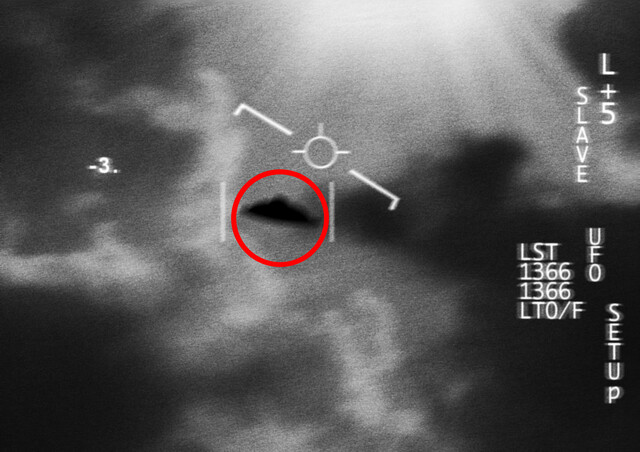Online Class: Vietnam War

no certificate
with CEU Certificate*
-
15Lessons
-
53Exams &
Assignments -
614Students
have taken this course -
11Hours
average time -
1.1CEUs
Course Description
Delving Deep into the Vietnam War: A Comprehensive Analysis
The Vietnam War, spanning from the mid-1950s to the mid-1970s, remains one of the most controversial, intricate, and studied conflicts in modern history. While every war leaves a mark on the nations involved, few have evoked as profound a division in public sentiment as this conflict did in the United States. Its far-reaching impacts, both domestically and internationally, still reverberate today.
The underpinnings of America's involvement in Vietnam trace back to the global ideological rift: the struggle between democracy and communism. After witnessing the after-effects of the Korean War and the Chinese Civil War of 1949, America, driven by its Cold War mentality, sought to stem the tide of communism in Southeast Asia. This policy led the United States to support the Republic of South Vietnam against the northern Democratic Republic of Vietnam, colloquially termed as "Vietcong".
A significant aspect that intensified the conflict was the involvement of global superpowers. Both the USSR and Communist China provided substantial military and economic support to North Vietnam, creating a formidable adversary for the U.S. This external support magnified the conflict's scale, making it more than just a regional dispute. The result was an incredibly grueling, sophisticated, and layered warfare, etching scars on an entire generation of American soldiers and civilians alike.
Course Overview:
This meticulously crafted course endeavors to provide learners with an exhaustive understanding of the Vietnam War, dissecting its multifaceted dimensions.
Key Features of This Course:
-
Holistic Approach: Not only will students learn about the military aspects, but they will also gain insights into the socio-political climate of the U.S during the 1960s and how it influenced decisions and perceptions regarding the war.
-
Expert Contributions: Esteemed scholars, war veterans, and academic experts have provided their insights, personal stories, and analyses, making the content rich and authentic.
-
Interactive Modules: Engage with varied materials like assignments, netlinks, and polls, enhancing the learning experience and ensuring comprehensive knowledge absorption.
-
Post-War Analysis: Explore the aftermath of the war, understanding the ramifications on U.S foreign policy, the socio-political climate, and the lives of those directly affected by the war.
Who Should Enroll?
Students, history enthusiasts, scholars, or anyone keen on understanding one of the most complex periods in U.S. history will find this course invaluable. With a blend of academic rigor, expert insights, and engaging content, this course promises to offer a profound understanding of the Vietnam War era.
In Conclusion
The Vietnam War is not just a chapter in history books; it's a myriad of stories, lessons, tragedies, and turning points. This course aims to shed light on those intricate details, offering students a chance to view the war from various perspectives and truly understand its profound impact on the world. Dive in to explore, understand, and reflect.
- Completely Online
- Self-Paced
- Printable Lessons
- Full HD Video

- 6 Months to Complete
- 24/7 Availability
- Start Anytime
- PC & Mac Compatible
- Android & iOS Friendly
- Accredited CEUs

Course Lessons
Lesson 1. Vietnam's Complex Tapestry: An In-Depth Historical Exploration
Vietnam's history is shaped by repeated cycles of foreign conquests, prominently by China and later by France and Japan, but the resilient Vietnamese have always managed to regain control of their nation. The geography of Vietnam, with its diverse climate and challenging terrain, has significantly influenced both its culture and historical conflicts.Lesson 2. Chemical Warfare: Napalm and Agent Orange
U.S. and Soviet technologies clashed in the Vietnam War, showcasing aircraft, helicopters, and advanced rifles that influenced global military strategies. Iconic weapons like the M16 and AK-47 highlighted the intense rivalry, while chemicals like Agent Orange left lasting scars.Lesson 3. Imperial Consequences: France, America, and the Indochina Struggle
The Geneva Accords divided Vietnam into two states, with Ho Chi Minh leading the communist north and Ngo Dinh Diem heading the anti-communist south. The ideological division between the two Vietnams foreshadowed decades of conflict fueled by differing political beliefs and external influences.Lesson 4. Diem's Downfall and the Escalation of War
Despite backing from the U.S., South Vietnam's political landscape was fractured by religious tensions and autocratic governance. These dynamics contributed to the disillusionment among key groups and amplified the communist cause.Lesson 5. From Turmoil to Conflict: The Escalation of U.S. Involvement in Vietnam
Following Kennedy's death, President Johnson retained key advisors, upholding existing Vietnam policies even as South Vietnam faced chaotic military rule. The Gulf of Tonkin incident spurred the U.S. Congress to pass a resolution escalating military involvement in Vietnam.Lesson 6. Formulating Tactical Blueprints: The Vietnam Conflict's Early Phase
Despite superior firepower, the U.S. sought a quick victory in Vietnam to avoid prolonged conflict, utilizing strategies of attrition and erosion. Conversely, the Vietcong and North Vietnamese leveraged guerilla warfare and patience to deplete American resolve.Lesson 7. Unfolding the Ia Drang Valley Clash
U.S. military strategies of attrition and erosion initiated major ground operations in Vietnam, starting with the successful Operation Starlite which boosted American morale with a 13:1 kill ratio against the Viet Cong. However, the resilience and tactics of the Vietnamese forces demonstrated that they were prepared to endure substantial losses, revealing the strategic misjudgments of U.S. leadership.Lesson 7. Unfolding the Ia Drang Valley Clash
U.S. military strategies of attrition and erosion initiated major ground operations in Vietnam, starting with the successful Operation Starlite which boosted American morale with a 13:1 kill ratio against the Viet Cong. However, the resilience and tactics of the Vietnamese forces demonstrated that they were prepared to endure substantial losses, revealing the strategic misjudgments of U.S. leadership.Lesson 8. Weaponizing the Land and the Sea: Early U.S. Offensives
Operation Market Time sought to cut Vietcong supply lines via sea routes, combining U.S. naval and air power with South Vietnamese forces. Though successful for a time, the operation inadvertently increased reliance on the Ho Chi Minh Trail, complicating the conflict.Lesson 8. Weaponizing the Land and the Sea: Early U.S. Offensives
Operation Market Time sought to cut Vietcong supply lines via sea routes, combining U.S. naval and air power with South Vietnamese forces. Though successful for a time, the operation inadvertently increased reliance on the Ho Chi Minh Trail, complicating the conflict.Lesson 9. The Elusive Success: Understanding U.S. Military Operations in Vietnam
Operation Gadsden and its successor Junction City demonstrated the U.S. resolve to disrupt Vietcong activities, seizing enemy supplies and fortifications, but they couldn't capture the strategic initiative. Meanwhile, the Communists utilized protracted warfare, extending the conflict's duration, and testing the patience and endurance of their adversaries.Lesson 10. The Unfolding Storm: A Detailed Examination of the 1968 Tet Offensive
The Tet Offensive saw over 80,000 Viet Cong forces launching surprise attacks on major Southern Vietnamese cities, challenging U.S. and ARVN control and aiming to topple Saigon's government. While the military incursion didn't achieve its objectives, the intense urban combats and media coverage helped turn American sentiment against the war's continuation.Lesson 11. Nixon's Vietnam Strategy and the Path to Peace
Amidst widespread disapproval, President Lyndon Johnson grappled with an unpopular war and failed peace efforts that culminated in his withdrawal from the 1968 presidential race. Richard Nixon's subsequent presidency promised stability and a phased troop withdrawal, eventually leading to the end of American involvement.Lesson 12. Legacy of the Vietnam War: A New World Order in Indochina
The Vietnam War's end saw Saigon's fall and communist consolidation across Indochina, with tragic outcomes in Cambodia and Laos aligning with new allies. Returning U.S. troops grappled with PTSD and societal scorn, compounded by ongoing searches for missing comrades.Lesson 13. Vietnam's Story: A Country Shaped by War and Peace
Vietnam, with a rich tapestry of historical influences, has seen its borders and governance change repeatedly over centuries. The 20th-century bifurcation and resultant Vietnam War were pivotal in creating the nation's current unified socialist government.
Learning Outcomes
- Describe the geographical features of Vietnam and analyze their impact on the country's historical conflicts and development.
- Identify the major historical events that contributed to Vietnam's resistance against foreign conquerors, including China and France.
- Define the critical technological innovations introduced during the Vietnam War and explain their impact on modern warfare tactics.
- Identify and compare key weapons used by U.S. forces and the Vietcong, evaluating their effectiveness and influence on combat strategies during the Vietnam War.
- Describe the reasons for U.S. support of France in Vietnam post-World War II, focusing on geopolitical and ideological factors.
- Identify key events leading to the division of Vietnam at the 17th parallel as per the Geneva Accords and the subsequent political developments in North and South Vietnam.
- Analyze the impact of Diem's religious and political policies on the socio-political unrest in South Vietnam, including the response from various factions.
- Define the political factors leading to the escalation of conflict in Vietnam, including the partition, communist mobilization, and U.S. foreign policy.
- Describe the impact of President Johnson's decision to retain Kennedy's foreign policy advisors on the escalation of U.S. involvement in Vietnam by 1965.
- Explain how the Gulf of Tonkin Incident led to greater U.S. military involvement in Vietnam, supported by the Gulf of Tonkin Resolution.
- Define the differing military strategies employed by the Vietcong and U.S. during the early stages of the Vietnam War, considering tactics and objectives.
- Identify and compare the contrasting strategic approaches of the North Vietnamese and American forces, focusing on their goals and operational execution in the Vietnam War.
- Recognize the strategic objectives and outcomes of U.S. military operations such as Operation Starlite during the Vietnam War.
- Demonstrate mastery of lesson content at levels of 70% or higher.
Additional Course Information

- Document Your Lifelong Learning Achievements
- Earn an Official Certificate Documenting Course Hours and CEUs
- Verify Your Certificate with a Unique Serial Number Online
- View and Share Your Certificate Online or Download/Print as PDF
- Display Your Certificate on Your Resume and Promote Your Achievements Using Social Media

Choose Your Subscription Plan
No Certificate / No CEUs
This course only
| Includes certificate | X |
| Includes CEUs | X |
| Self-paced |

|
| Instructor support |

|
| Time to complete | 6 months |
| No. of courses | 1 course |
Certificate & CEUs
This course only
| Includes certificate |

|
| Includes CEUs |

|
| Self-paced |

|
| Instructor support |

|
| Time to complete | 6 months |
| No. of courses | 1 course |
Certificates & CEUs
Includes all 600+ courses
| Includes certificate |

|
| Includes CEUs |

|
| Self-paced |

|
| Instructor support |

|
| Time to complete | 12 Months |
| No. of courses | 600+ |
Certificates & CEUs
Includes all 600+ courses
| Includes certificate |

|
| Includes CEUs |

|
| Self-paced |

|
| Instructor support |

|
| Time to complete | 24 Months |
| No. of courses | 600+ |
Student Testimonials
- "Excellent course!!! Very knowledgeable instructor who always offered feedback. The lesson videos that he presents helps so much." -- Cheryl S.
- "Great course, I learned a lot and the instructor is very knowledgeable." -- Kathy L.
- "The instructor was so professional and knowledgeable it made the whole experience incredible." -- Terrie C.
- "I had learned a lot about the Vietnam War that I did not know." -- Patricia T.
- "Excellent course. Excellent instructor." -- George M.
- "I felt the entire course was very helpful and well put together. The Instructor for this course was extremely good job and knows the subject well." -- Micah S.
- "I talked (emailed) with the insturctor several times. Being a Vietnam Vet, this course was very personal to me. My insturctor was very compassonite at times and very well versed in the subject." -- Paul S.
- "Love your courses!!!" -- Kyle B.
- "I wanted to learn about the war, that's what it taught me.AWESOME INSTRUCTOR!!!!!! He should be given a prize ;)" -- Riley Z.
Related Courses
-
 45 hours
4.5 CEUs
Event Management Course Bundle
+ More Info
45 hours
4.5 CEUs
Event Management Course Bundle
+ More Info
-
 95 hours
9.5 CEUs
Math All-In-One (Arithmetic, Algebra, and Geometry Review)
+ More Info
95 hours
9.5 CEUs
Math All-In-One (Arithmetic, Algebra, and Geometry Review)
+ More Info
-
 17 hours
1.7 CEUs
ESL Basic Grammar and Writing
+ More Info
17 hours
1.7 CEUs
ESL Basic Grammar and Writing
+ More Info
-
 10 hours
1.0 CEUs
Memory and Concentration Techniques
+ More Info
10 hours
1.0 CEUs
Memory and Concentration Techniques
+ More Info
-
 74 hours
7.4 CEUs
Medical Billing and Coding Course Bundle
+ More Info
74 hours
7.4 CEUs
Medical Billing and Coding Course Bundle
+ More Info
-
 54 hours
5.4 CEUs
Become a Life Coach - Course Bundle
+ More Info
54 hours
5.4 CEUs
Become a Life Coach - Course Bundle
+ More Info
-
 72 hours
7.2 CEUs
Writing Help Course Bundle
+ More Info
72 hours
7.2 CEUs
Writing Help Course Bundle
+ More Info
-
 52 hours
5.2 CEUs
ESL Grammar Skills: Level 1-5 Course Bundle
+ More Info
52 hours
5.2 CEUs
ESL Grammar Skills: Level 1-5 Course Bundle
+ More Info
-
 26 hours
2.6 CEUs
Human Resources Productivity Course Bundle
+ More Info
26 hours
2.6 CEUs
Human Resources Productivity Course Bundle
+ More Info
-
 36 hours
3.6 CEUs
Ultimate Secretary Training Bundle
+ More Info
36 hours
3.6 CEUs
Ultimate Secretary Training Bundle
+ More Info
-
 26 hours
2.6 CEUs
Ultimate Excel Training Bundle
+ More Info
26 hours
2.6 CEUs
Ultimate Excel Training Bundle
+ More Info
-
 4 hours
0.4 CEUs
Building a Bully-Free Future
+ More Info
4 hours
0.4 CEUs
Building a Bully-Free Future
+ More Info
-
 8 hours
0.8 CEUs
Quicken Tutorial: All Versions
+ More Info
8 hours
0.8 CEUs
Quicken Tutorial: All Versions
+ More Info
-
 13 hours
1.3 CEUs
American Civil War
+ More Info
13 hours
1.3 CEUs
American Civil War
+ More Info
-
 7 hours
0.7 CEUs
Google Sheets
+ More Info
7 hours
0.7 CEUs
Google Sheets
+ More Info
-
 7 hours
0.7 CEUs
Computer Literacy Level 1 - Computer Basics
+ More Info
7 hours
0.7 CEUs
Computer Literacy Level 1 - Computer Basics
+ More Info
-
 5 hours
0.5 CEUs
Starting Your Own Cleaning Business
+ More Info
5 hours
0.5 CEUs
Starting Your Own Cleaning Business
+ More Info
-
 5 hours
0.5 CEUs
Community Development 101
+ More Info
5 hours
0.5 CEUs
Community Development 101
+ More Info
-
 5 hours
0.5 CEUs
UFO Studies
+ More Info
5 hours
0.5 CEUs
UFO Studies
+ More Info
-
 5 hours
0.5 CEUs
End of Life Care
+ More Info
5 hours
0.5 CEUs
End of Life Care
+ More Info





